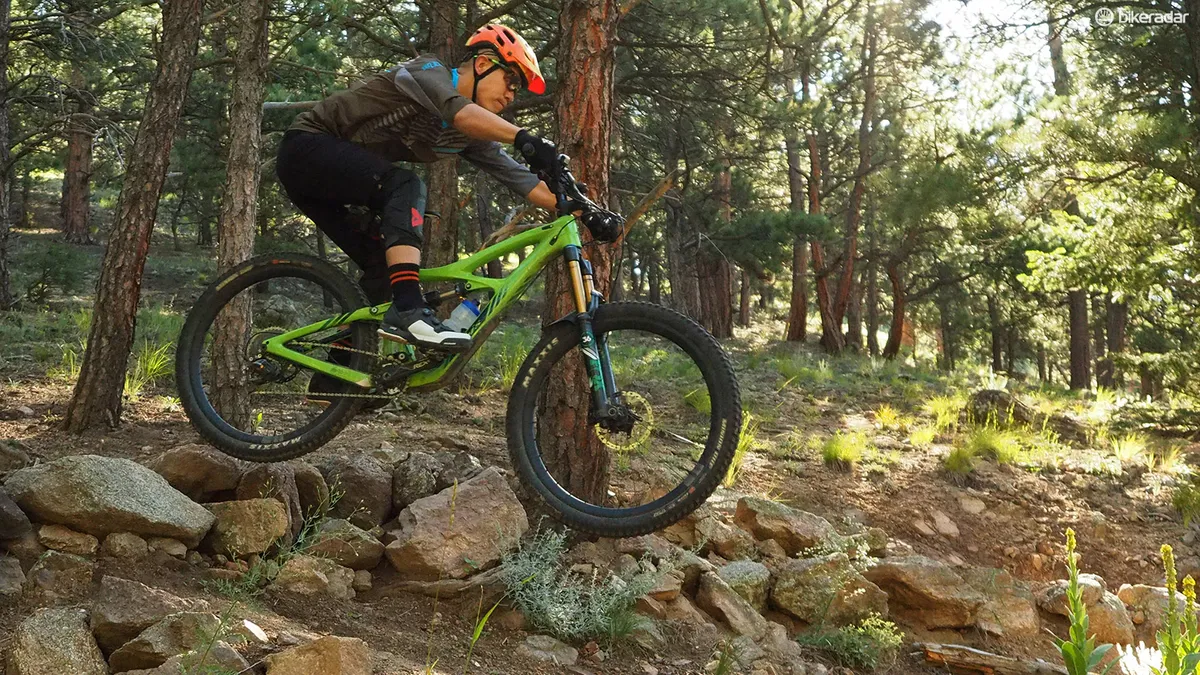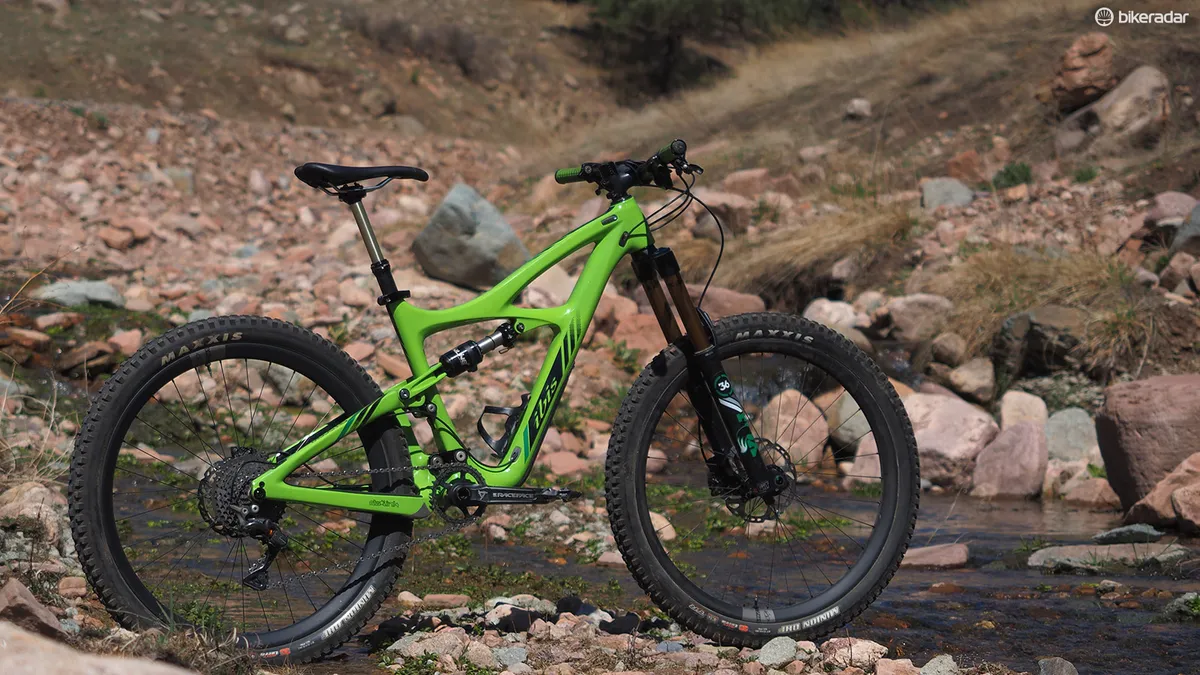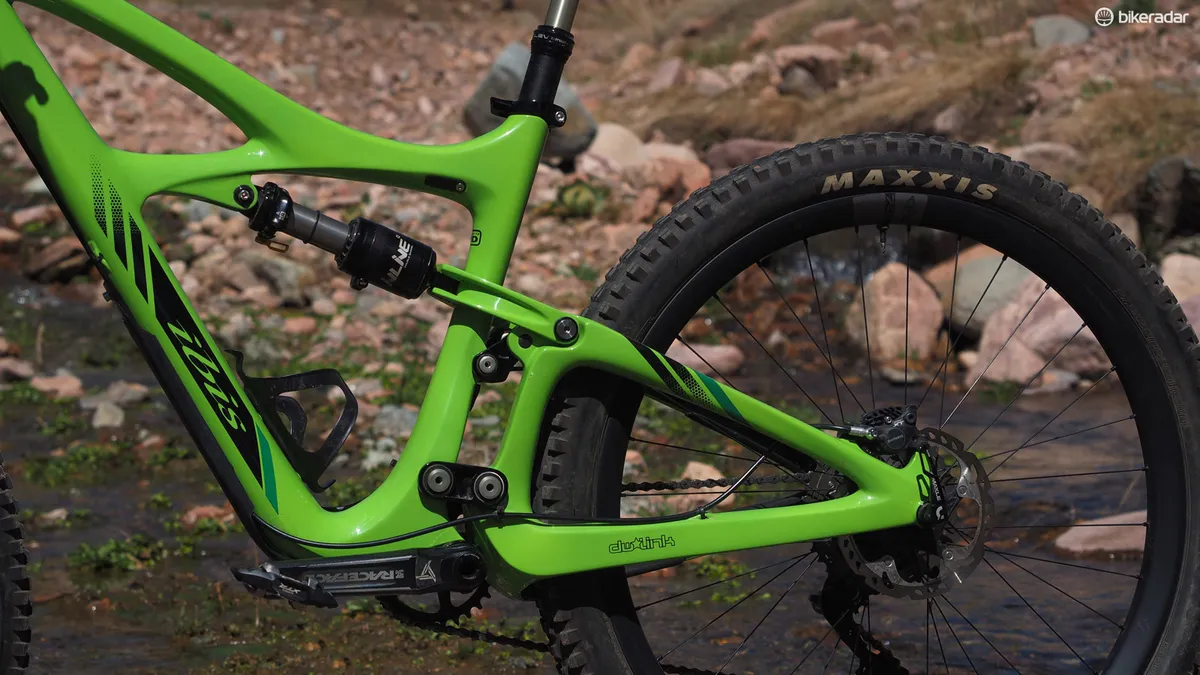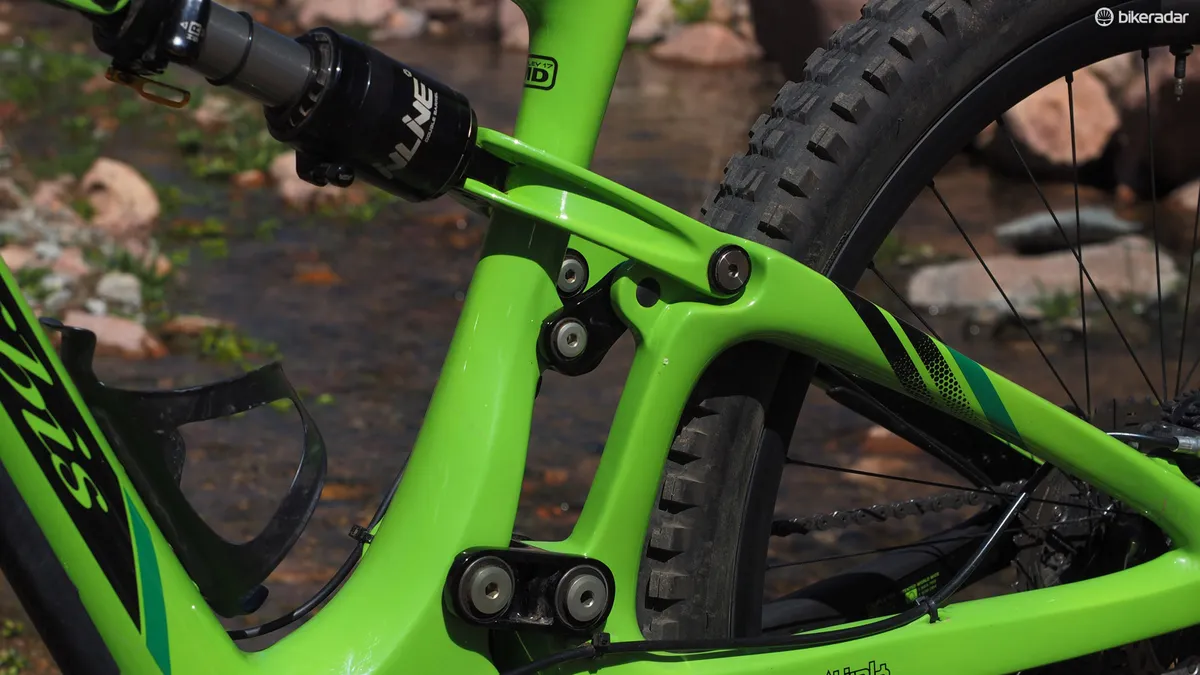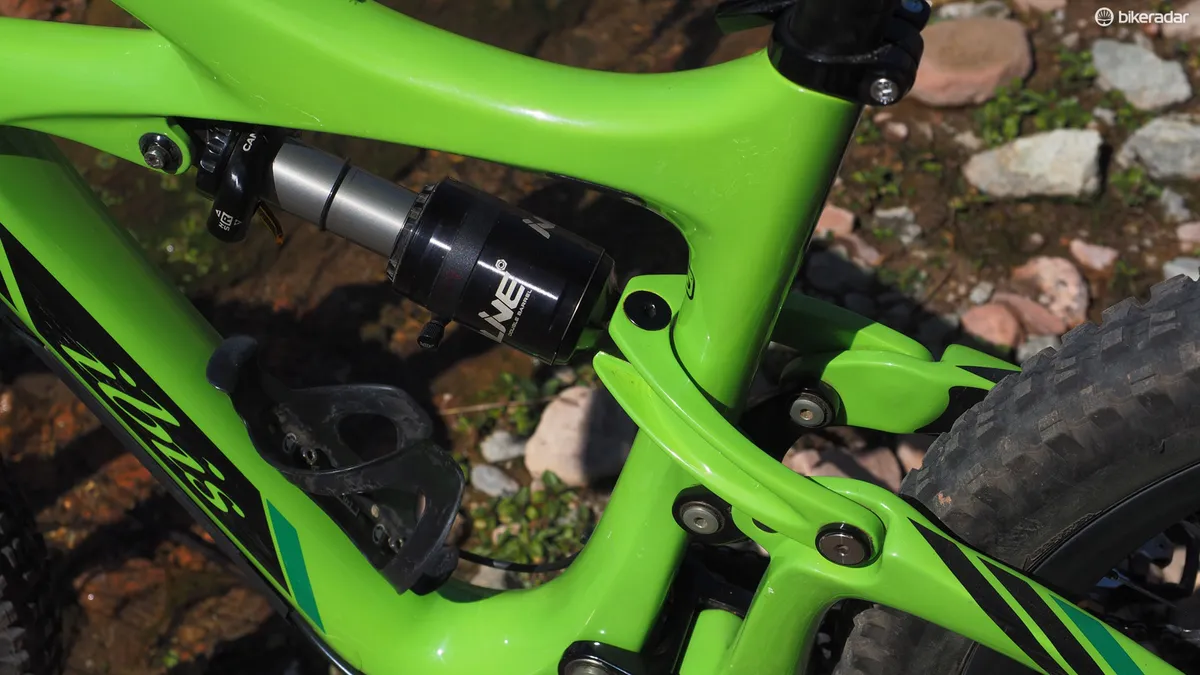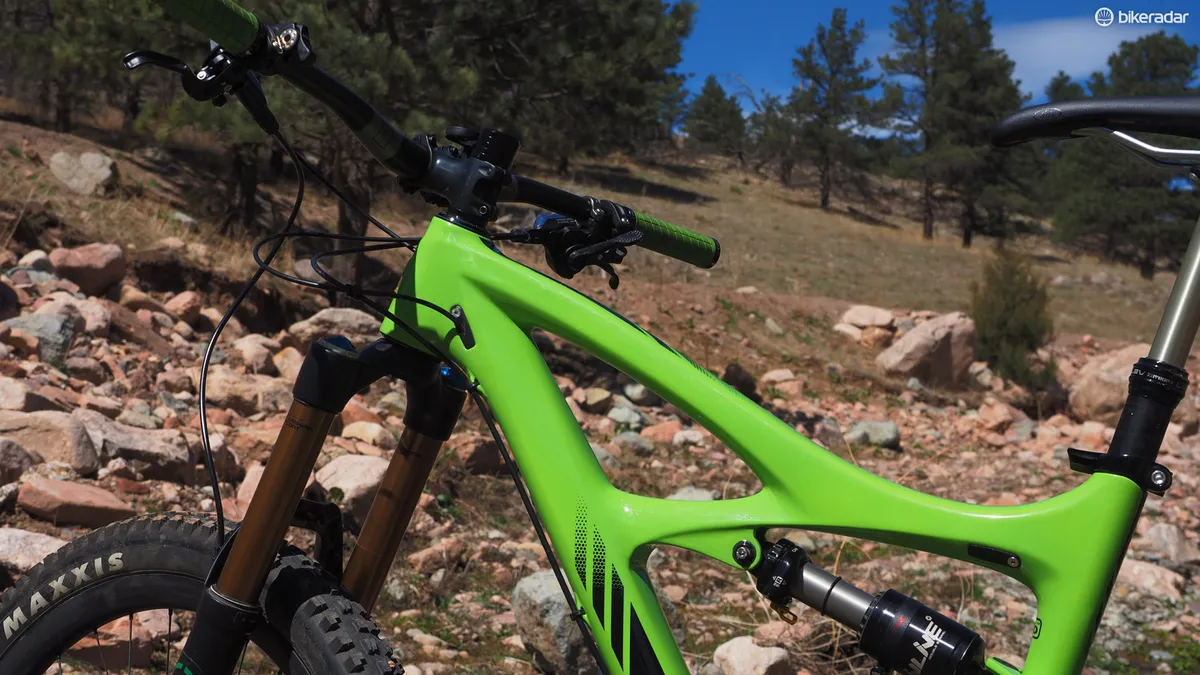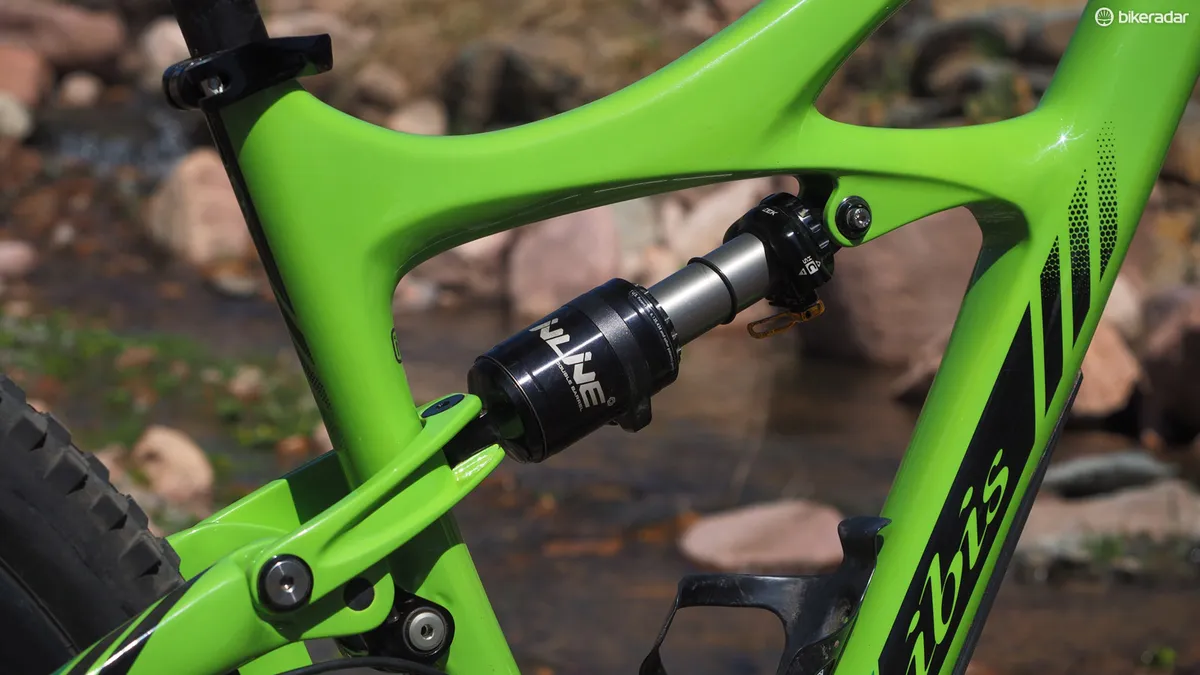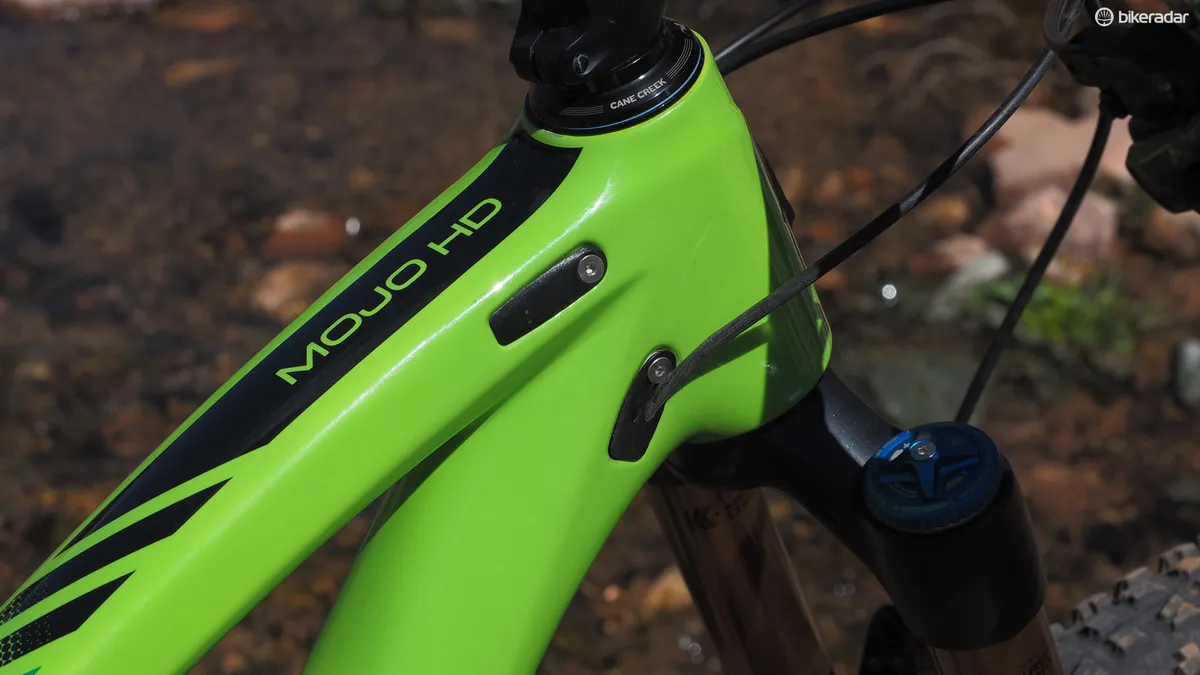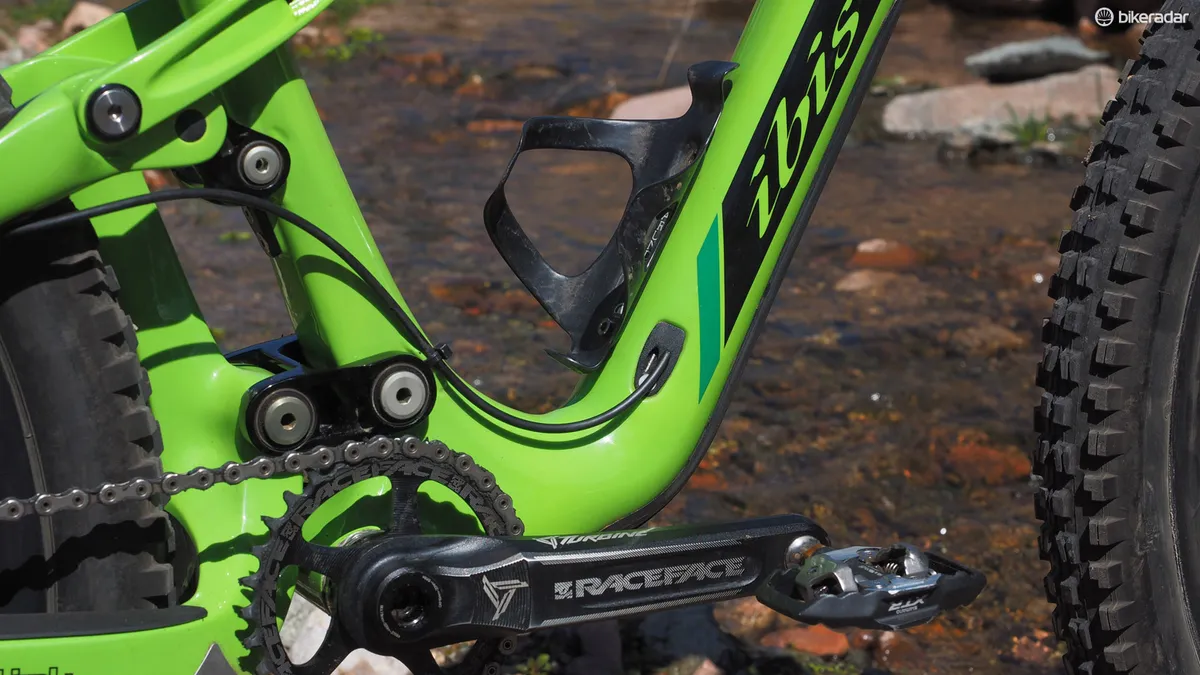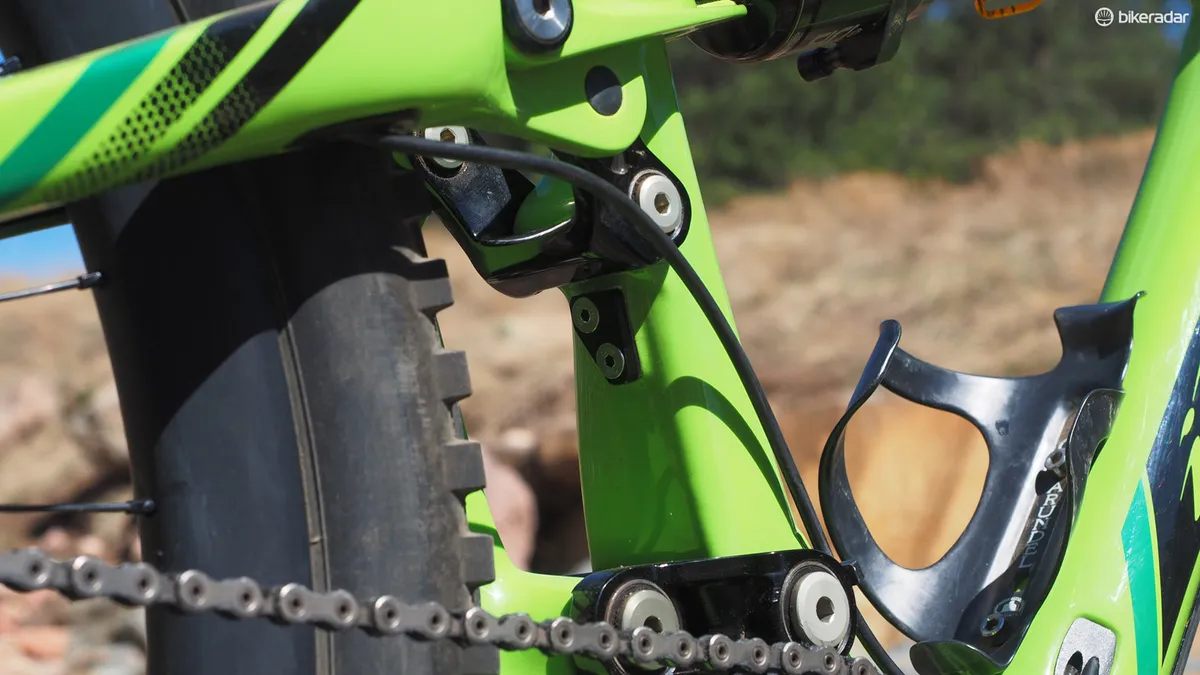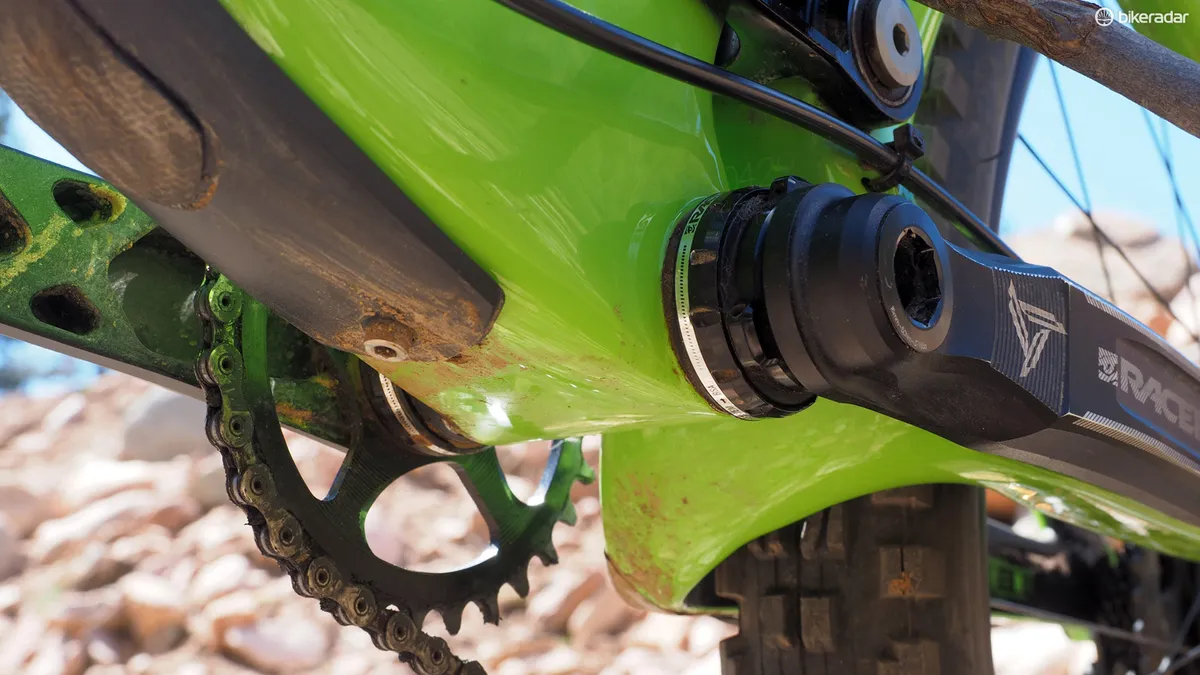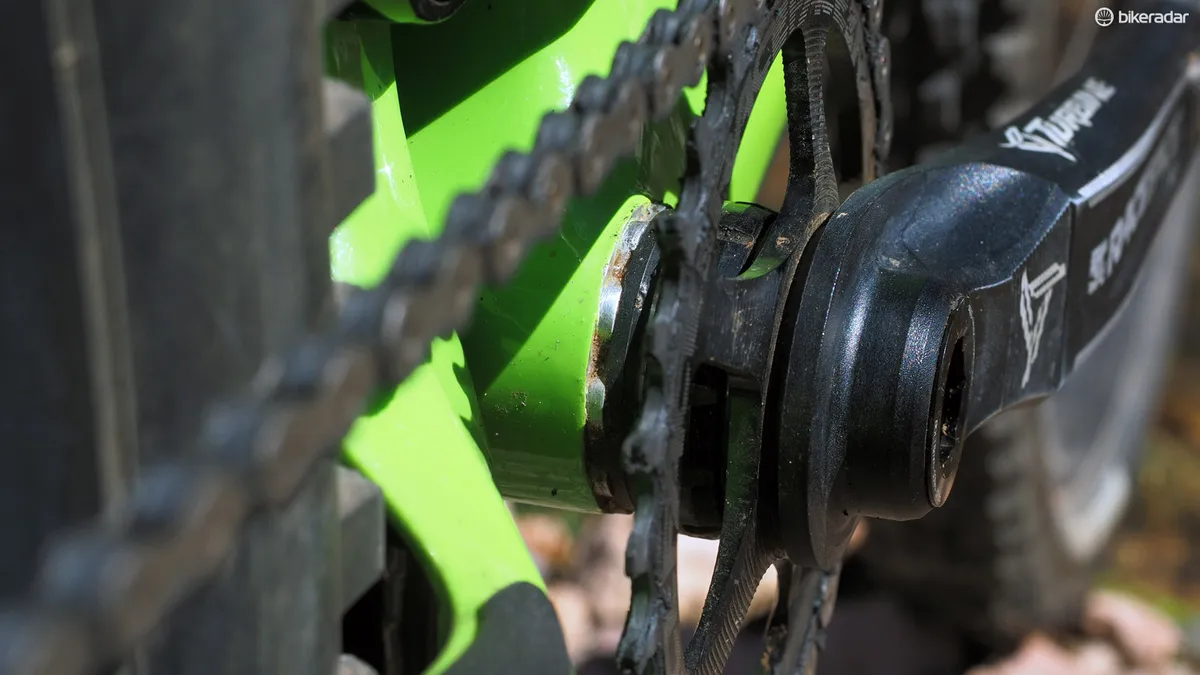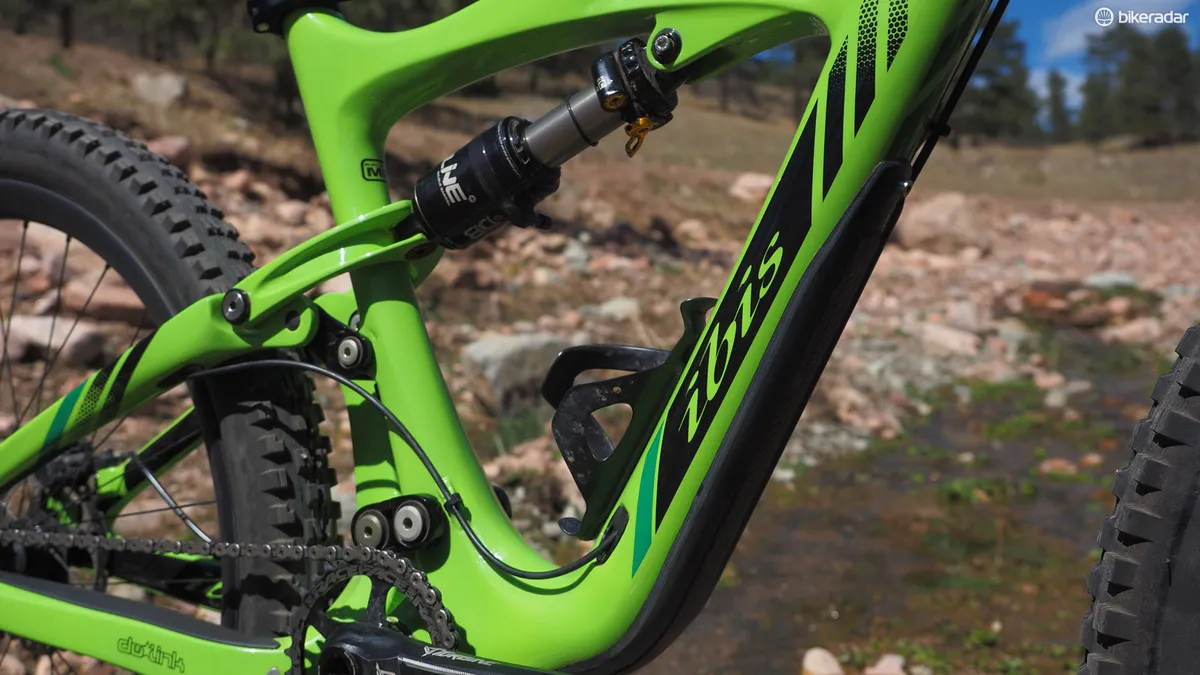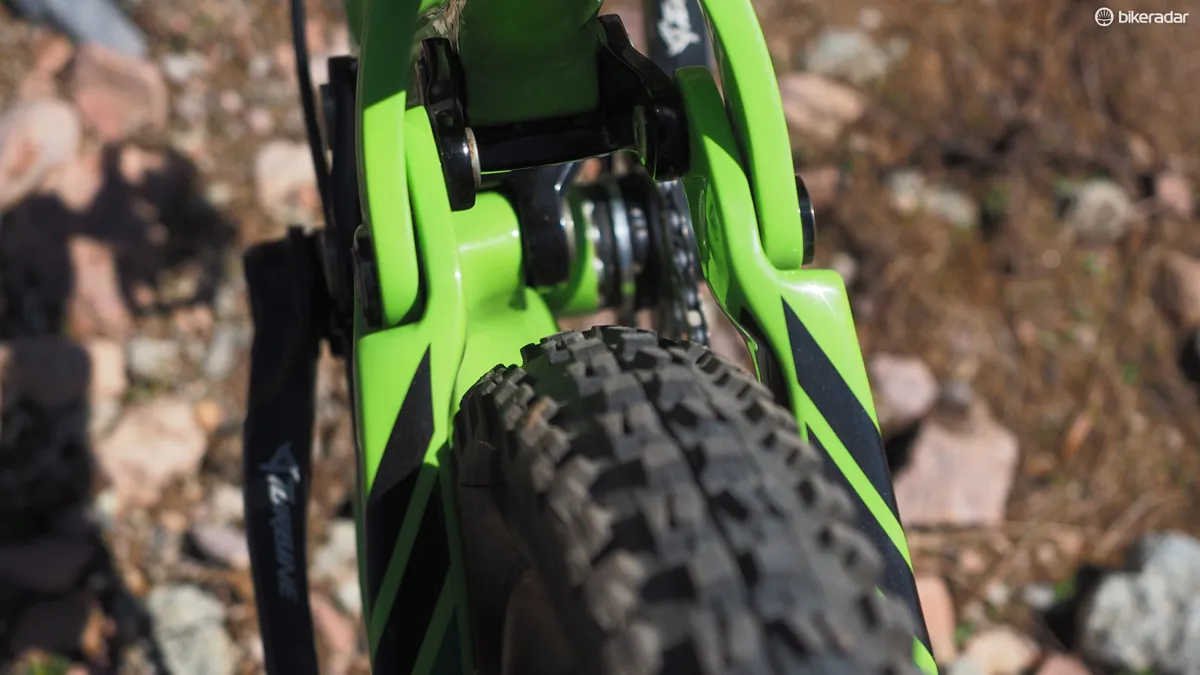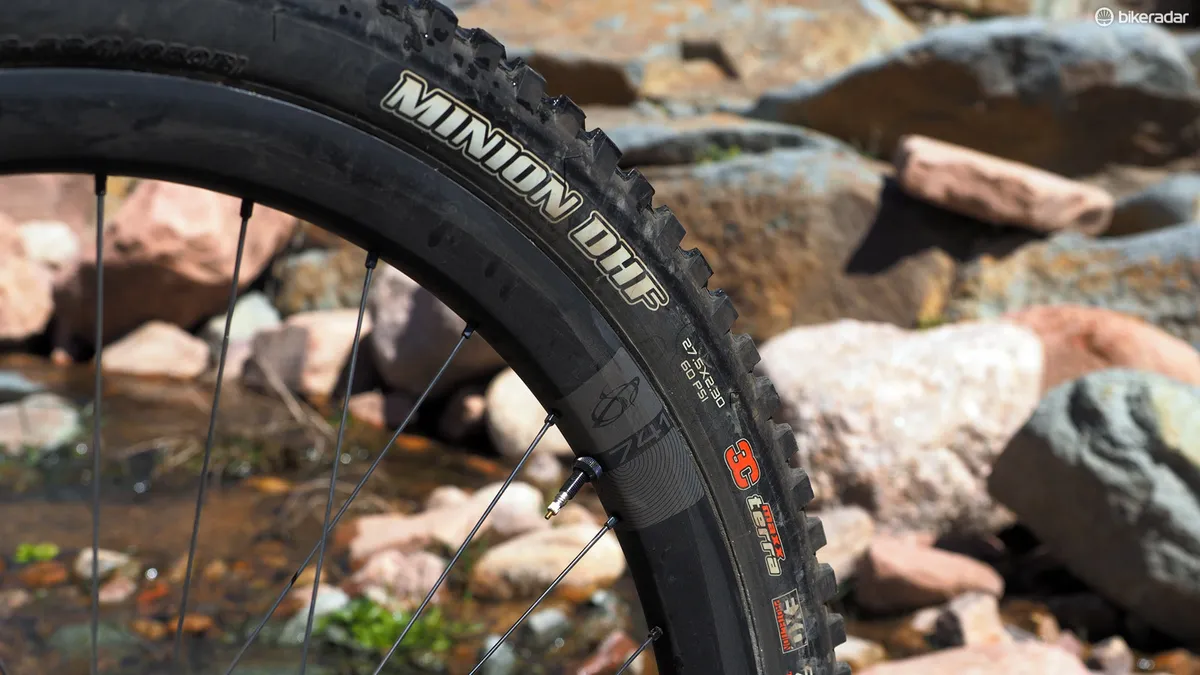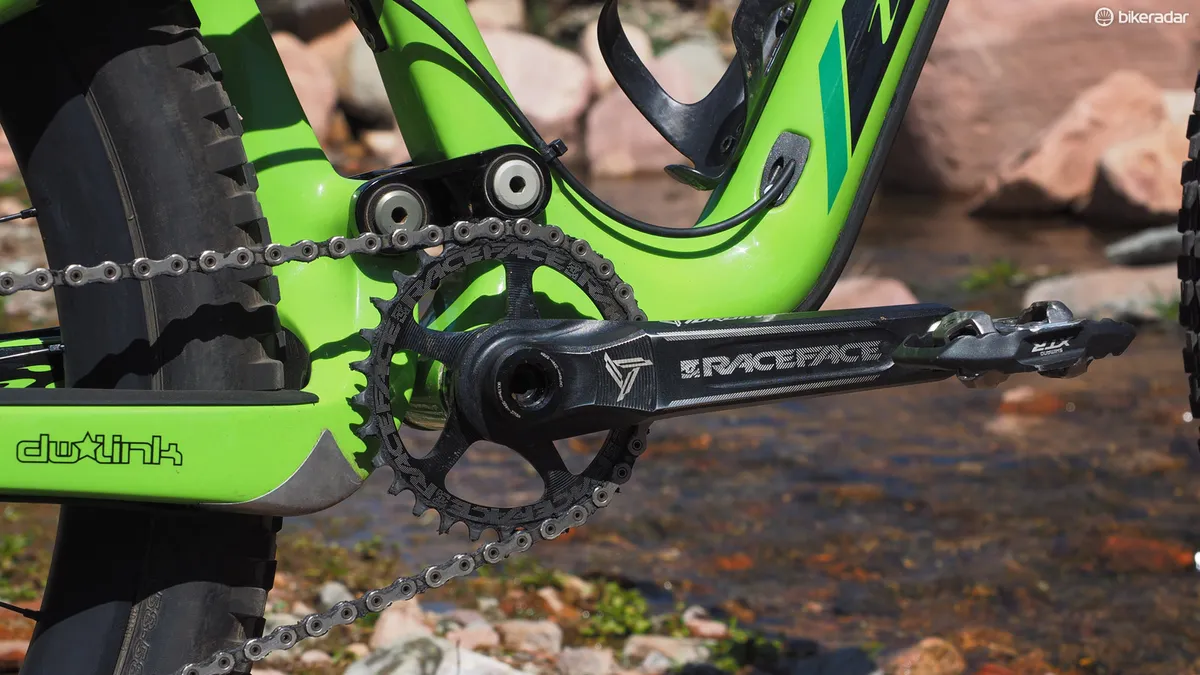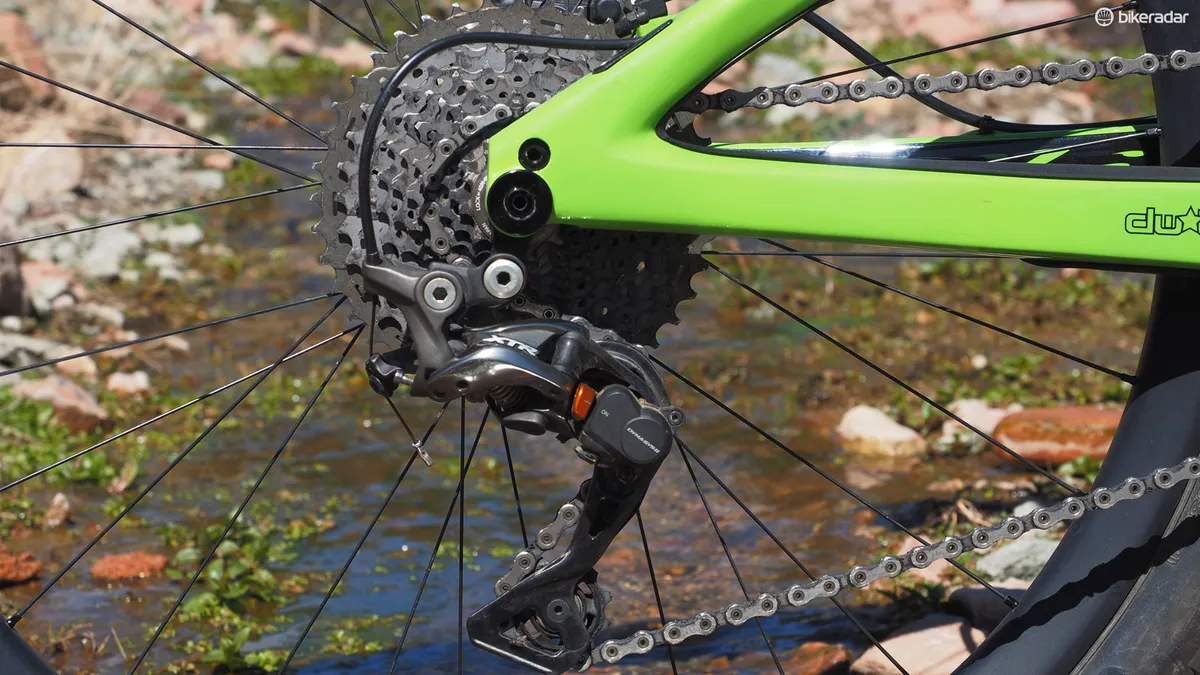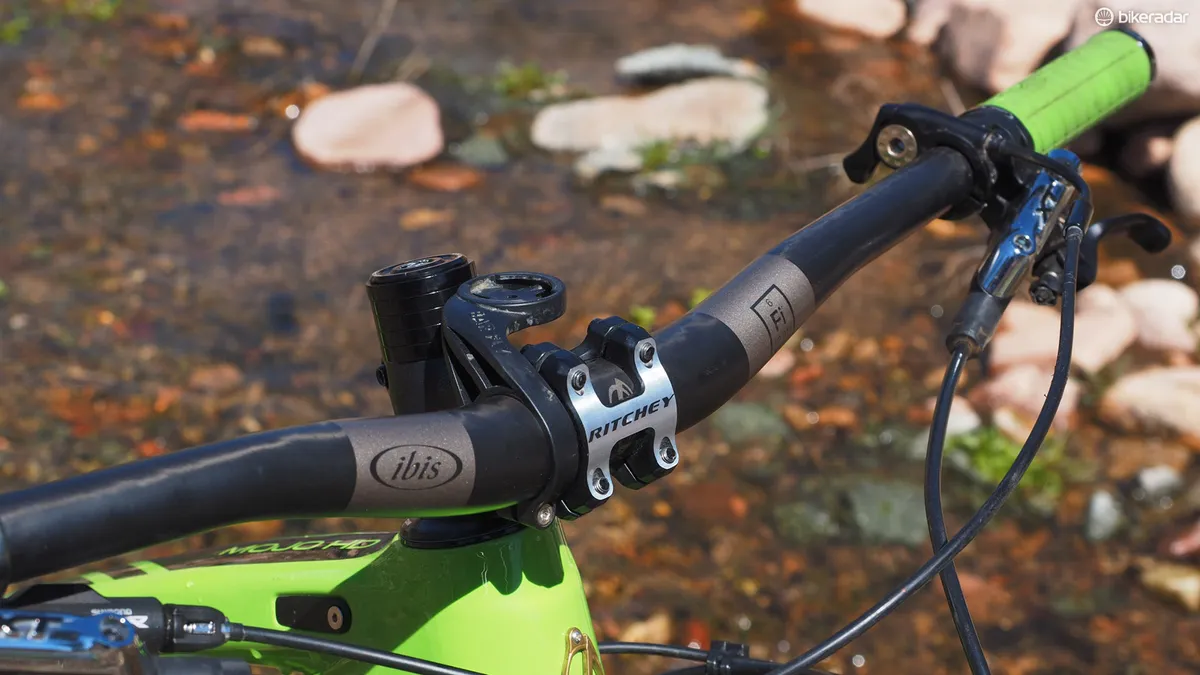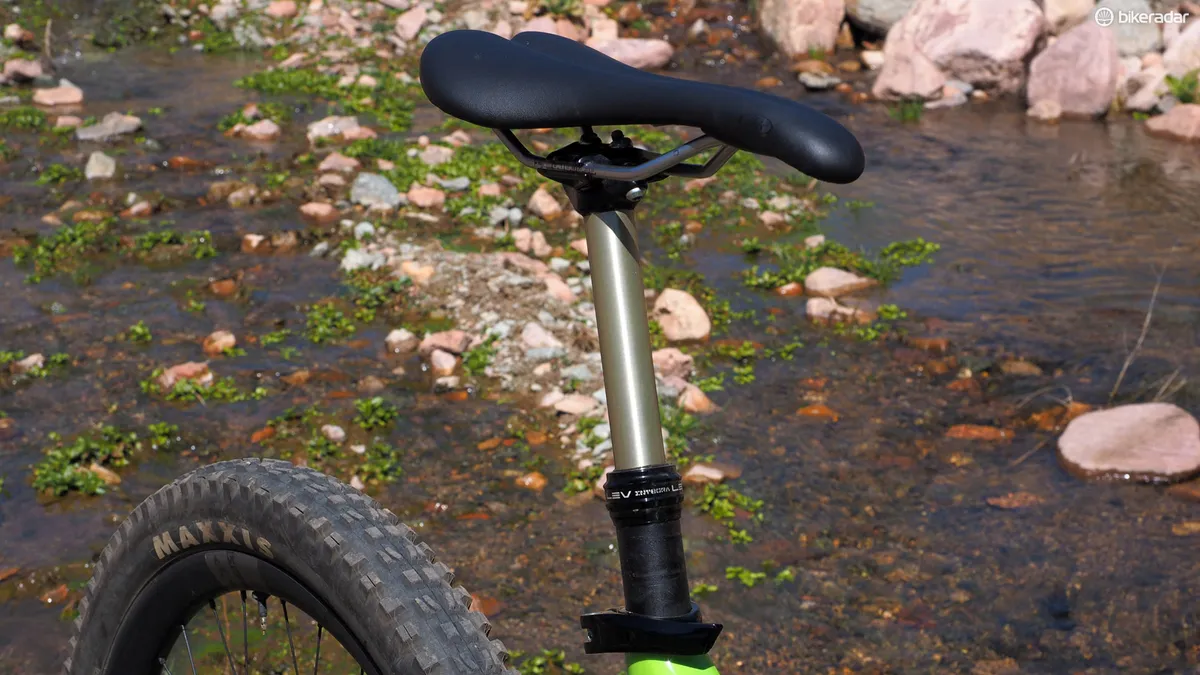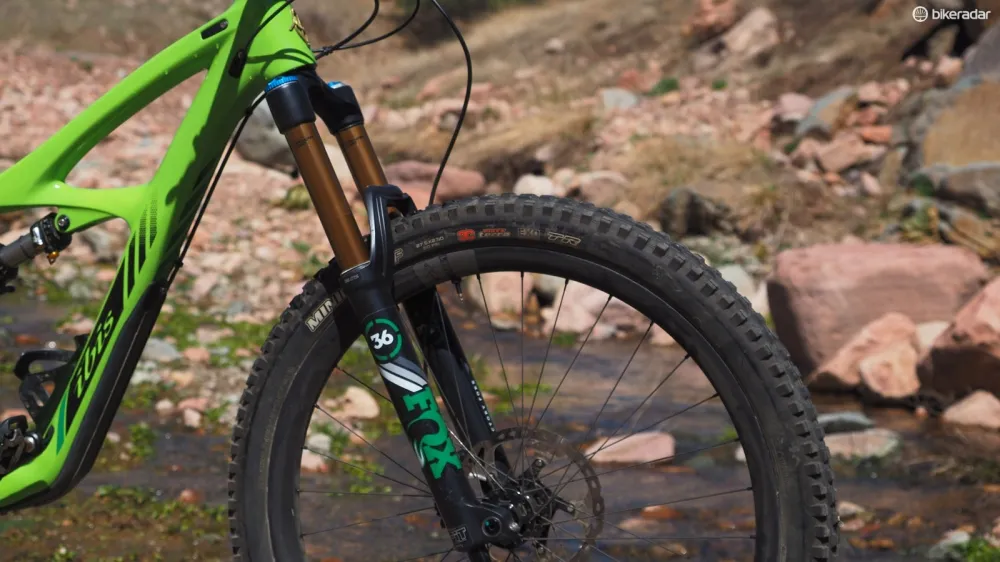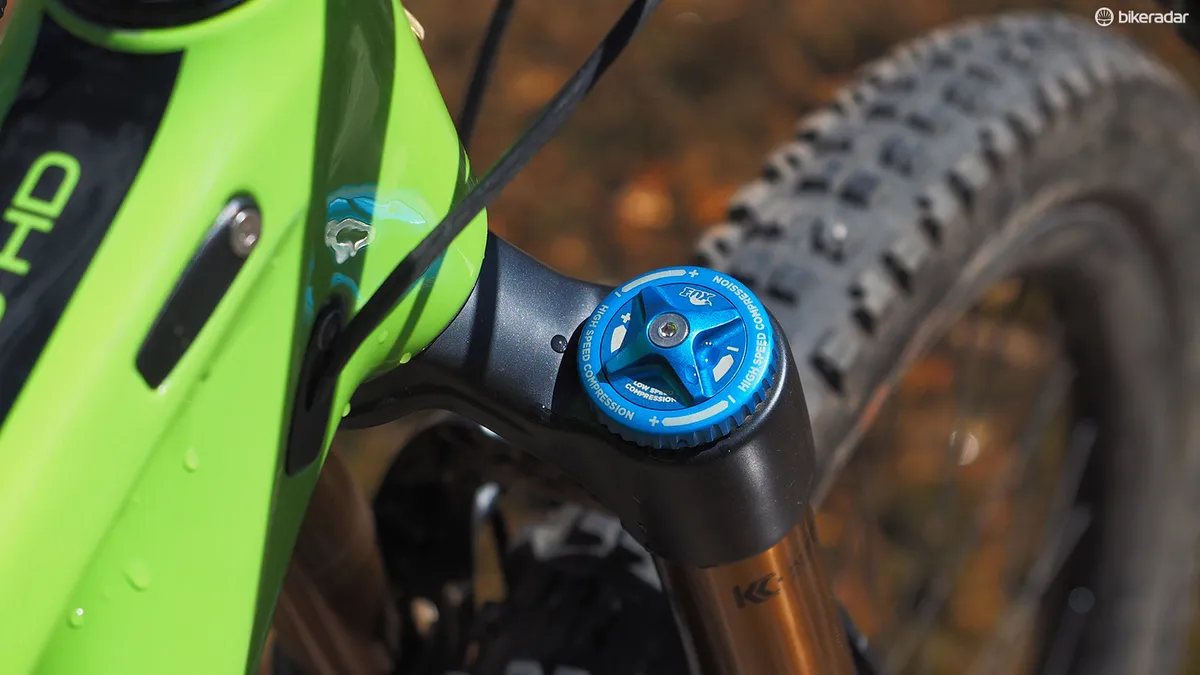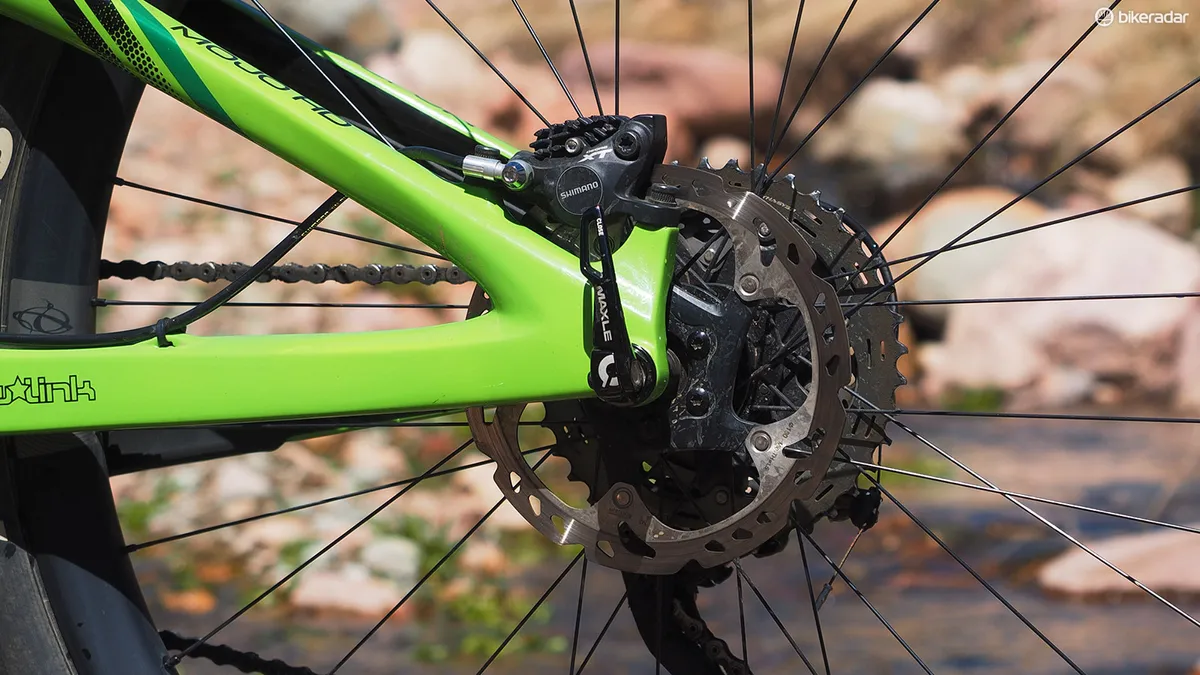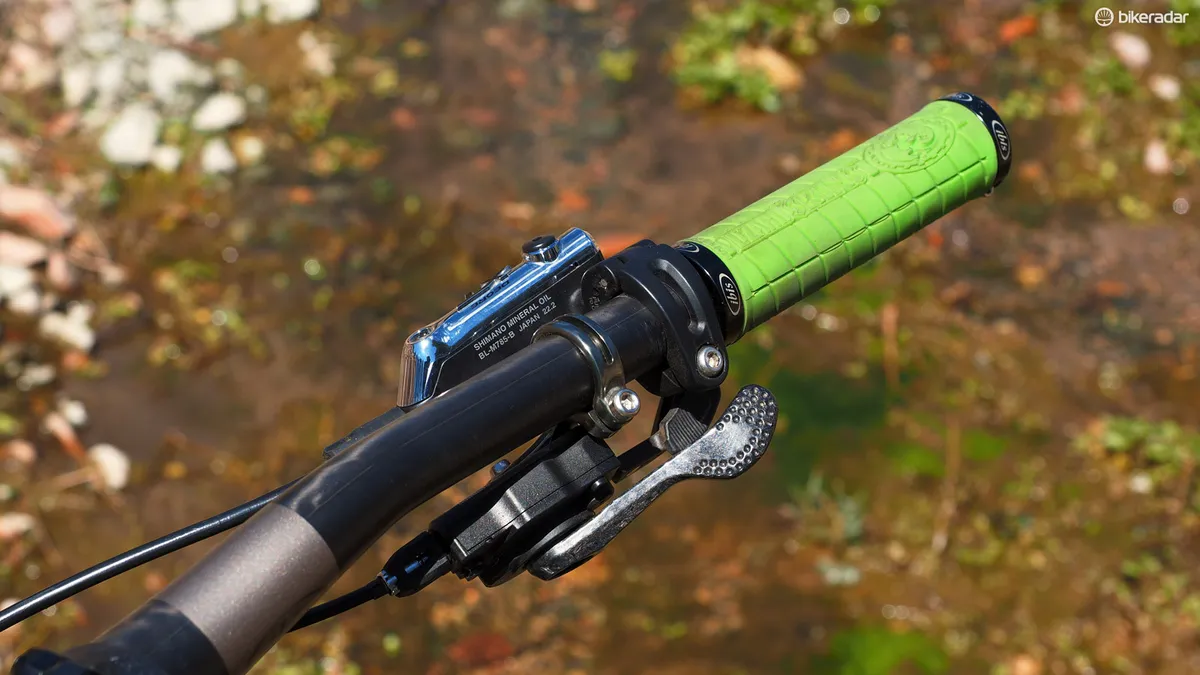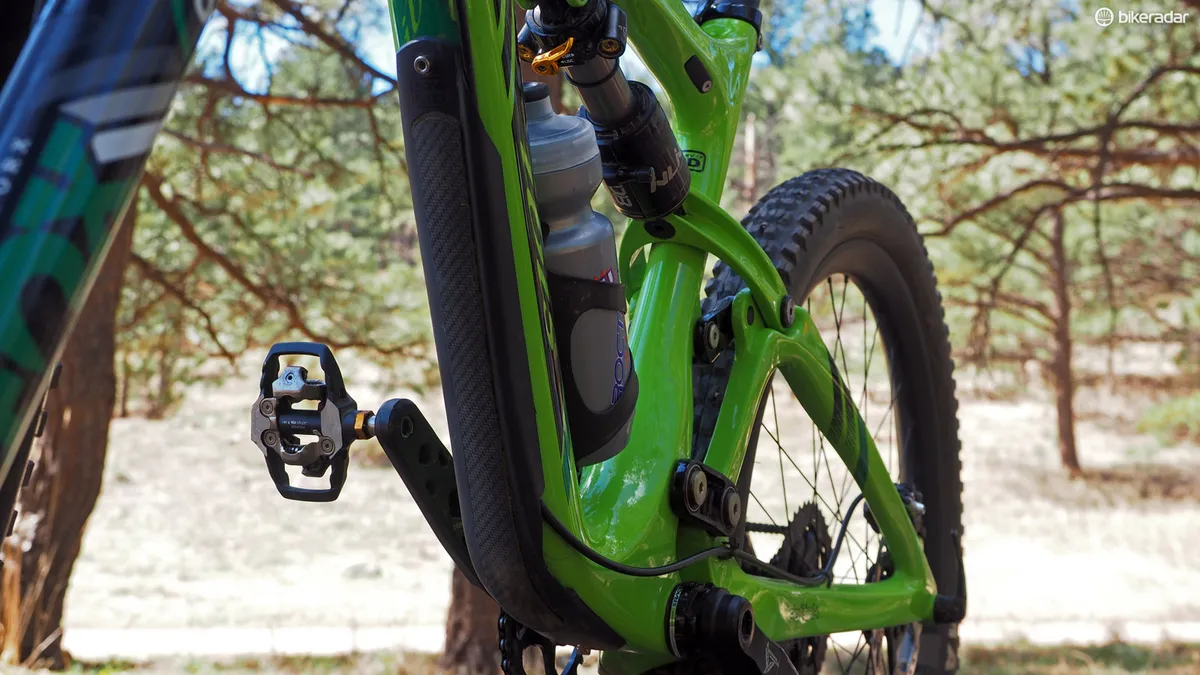How good is the new Ibis Mojo HD3? So good that once the review period finally wrapped up, I didn’t send the bike back – I sent Ibis my credit card number. The ‘enduro’ tagline may be agonizingly overused but the HD3 embodies the spirit of the category with far more downhill capability than its somewhat modest 150mm of travel might suggest, plus climbing performance that’s better than many dedicated XC machines.
- Highs: Ultra-rigid chassis, fantastically versatile handling, supremely efficient-yet-supple suspension, great frame details, threaded bottom bracket
- Lows: Sub-par saddle, narrow gear range, questionable dropper post reliability, expensive
- Buy if: You’re after a true one-bike quiver
Ride and handling: does it all, and very well
So-called ‘quiver killer’ bikes are too often an exercise in compromises but the HD3 is a shining example of deftly shooting the gap.
On the one hand, its 150mm of rear wheel travel is more than happy to squash big jumps and drops, but it’s still sensitive enough to level out trail chatter, too. On one recent test ride, I blindly followed one of my riding buddies off a downhill chest-high boulder to a flat landing and the Mojo laughed it off. Likewise, the Mojo’s impressive rear end suppleness was more than enough to steamroll the multitude of smaller roots and braking bumps on the Braille Trail in central California’s legendary Demo Forest.
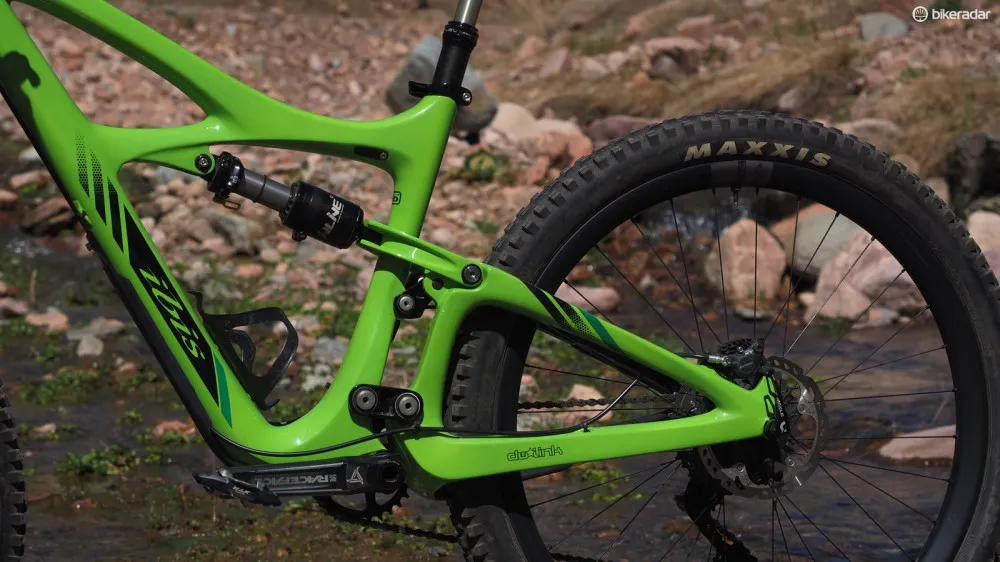
The latest iteration of Dave Weagle's dw-link rear suspension finds its way on the Ibis Mojo HD3
This test Mojo even saw two full days of lift-serviced riding up in Colorado’s Winter Park area – one at Granby Ranch and the other at Trestle Bike Park – and it kept up fine with full-on downhill rigs with no ill effects to show for it aside from a bit of creakiness afterward (which was easily remedied with some hex wrenches and grease).
Yet despite such impressive ‘big bike’ chops, the Mojo feels impressively eager on the climbs. Pedaling efficiency truly rivals some of the best dedicated XC racing machines out there with almost zero bob, even when standing and with the stock Cane Creek DBinline CS rear shock’s climb switch left in the fully open mode. In six months, the bike has seen far more all-day epic rides than I typically would have considered, particularly with other, substantially lighter bikes invariably available for the taking.
Ibis has nailed the Mojo HD3 geometry, too, injecting a healthy amount of high-speed confidence into the chassis while still retaining excellent lower-speed manners and overall liveliness for general trail riding. With the exception of those two days of lift riding – where I occasionally wished for a slightly slacker and longer front end for a bit more stability – the 66.6-degree head tube angle and medium-long cockpit feels just right, nimbly squirming through tight uphill switchbacks and steep, rocky downhill chutes alike.
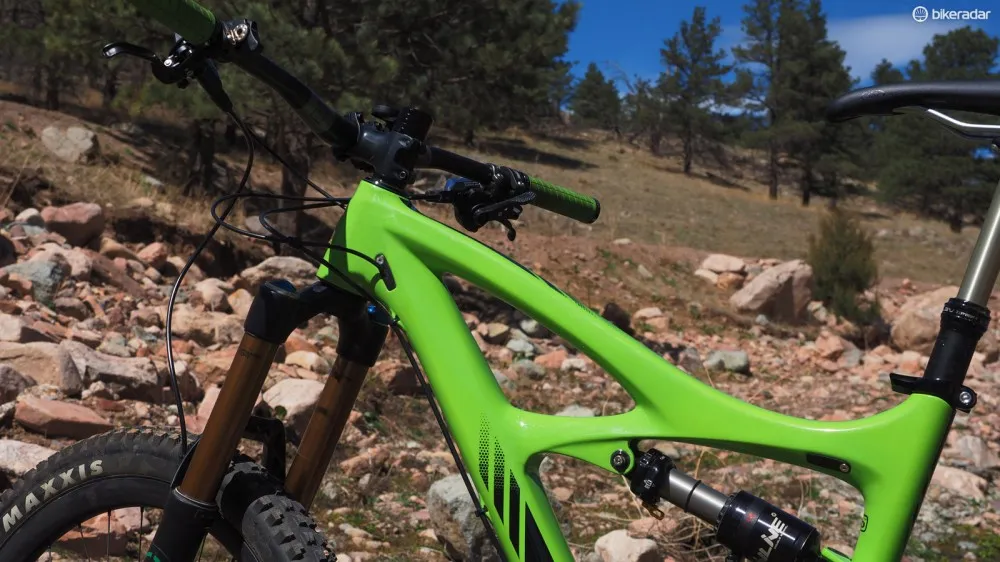
There's a lot of familiar visual design in this latest Mojo HD3
If the Mojo’s somewhat middle-of-the-road numbers seem steeper and shorter than competitors that are more keenly focused on the timed aspects of enduro racing, that’s because they are. A medium Santa Cruz Nomad, for example, has the same cockpit length but with a substantially slacker 65-degree head tube angle that puts the front wheel a full 25mm further in front of you. That said, it’s only a liability if you’re far more focused on ultra-steep, fast, and technical downhill terrain. Otherwise, the vast majority of riders – even most casual enduro racers – are more likely to benefit from the Mojo’s more versatile handling manners on a day-to-day basis.
Also keep in mind that while the bottom bracket might seem extremely low at just 344mm (13.5in) – 8mm closer to the ground than the already low Specialized Enduro – pedal strikes still aren’t an issue since the suspension tends to sit high up in its travel. On the trail, the Mojo feels nicely planted to the earth and flicks through linked corners with ease with no drama or excessive body English required.
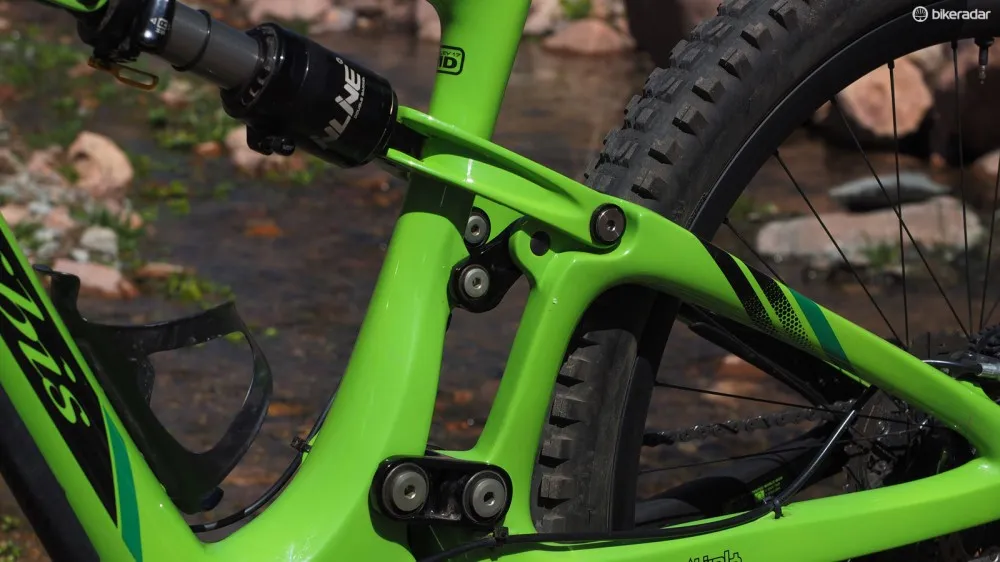
The short links and more compact layout of the new Ibis Mojo HD3 suspension makes for a stiffer rear end than before
All of this is built into a carbon frame that’s insanely rigid. For whatever the semi-slack front end might seemingly lack in stability on paper, it more than makes up for it in terms of predictability. Even when landing bigger jumps or charging through fast downhills littered with babyheads and scree, the front end faithfully stays where you point it with no springback or out-of-plane loading that can throw you offline.
Frame: nailing the bull’s eye
Ibis has retained the visual design language from previous HD models such as the distinctive bridge joining the top and down tubes but aside from that, it’s an all-new chassis.
Once again, Ibis is using a dw-link suspension layout but the kinematics have been adjusted for better pedaling performance with modern 1x cranksets, plus a more linear leverage ratio curve for a livelier feel overall that doesn’t tend to wallow in the middle of the travel range. Since both of these characteristics are built directly into the suspension geometry itself, there’s no need for heavy-handed compression damping in the rear shock – and should you decide that you still prefer a multiple-ring drivetrain, there’s a removable front derailleur mount hidden away behind the seat tube.
The dw-link rear end is also more compact than before, with all of the links and pivots now residing behind the seat tube (which has shifted slightly forward to make room) and a new carbon clevis driving the rear shock. The more efficient packaging allows for shorter chainstays and clearance for treads up to 2.4in wide on the fat 27.5in rims. Thanks to a newly curved down tube, there’s also now room for a large water bottle inside the main triangle, even down to a medium sized frame.
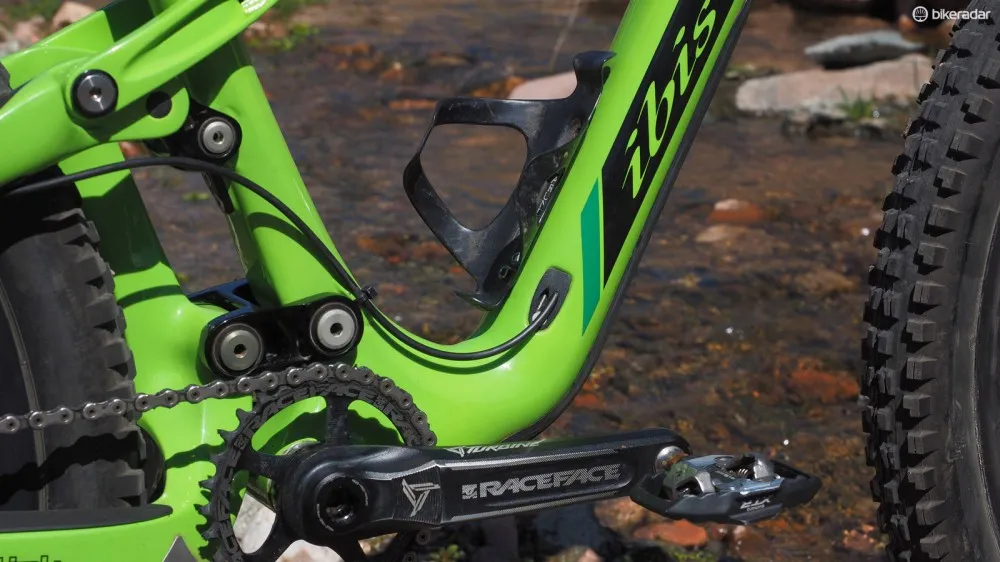
The cable isn't entirely internal but that's just fine by us
Ibis has been criticized in the past for having short cockpits but that’s largely been rectified here. Compared with the outgoing Mojo HDR, a medium Mojo HD3 has 32mm more reach for a much roomier feel and better compatibility with shorter stems. Standover clearance has gone up, too, while the seat tubes are slightly shorter than before to better mesh with modern dropper seatposts. With my shorter legs, for example, I oftentimes have to slam 125mm-travel droppers nearly all the way down into the seat tube but on the Ibis, I’ve got more than enough room for a 150mm model.
Adding further fuel to the fire is the well executed internal cabling layout with relatively big ports and lots of options for easier servicing and increased component flexibility, beefy molded frame guards for key areas, a mix of oversized radial and angular contact suspension pivot bearings for durability, and – last but certainly not least – a threaded bottom bracket shell (hallelujah!) with removable chain guide tabs to keep creaking at bay while still retaining compatibility with newer 30mm-diameter cranksets.
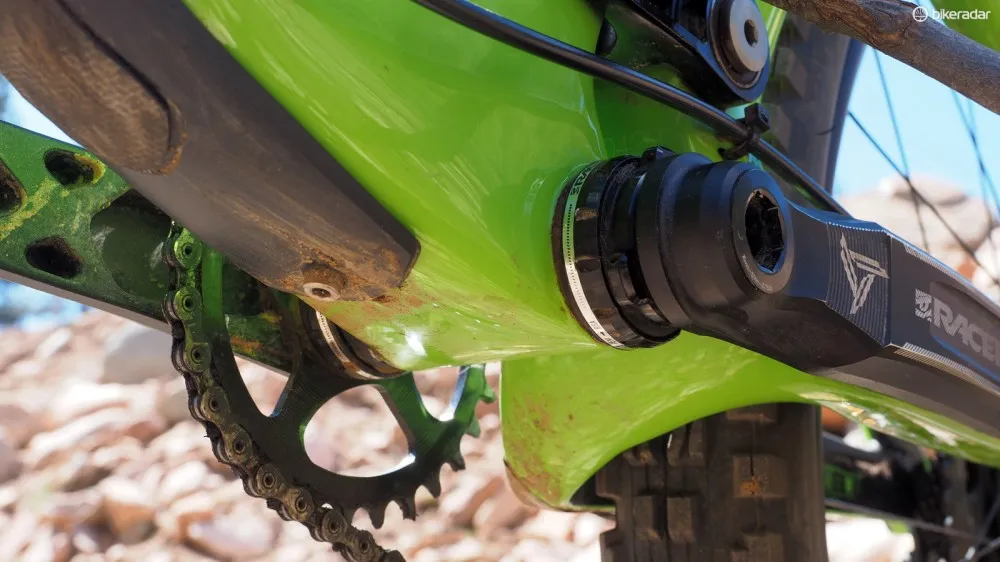
Ibis has thankfully graced the Mojo HD3 with a threaded bottom bracket
Despite all the improvements, actual weight for a medium carbon frame and shock is an impressive 2.97kg (6.57lb), including the rear derailleur hanger, seatpost collar, and optional down tube guard (sticking with the standard Fox Float CTD and omitting some of the bolt-on bits would bring that figure much closer to Ibis’s sub-6lb claims).
Equipment: a great blend of low weight and toughness
Ibis offers the Mojo HD3 in a dizzying array of build kits and options but I went with the near-flagship XTR 1x Werx setup that included a 160mm-travel Fox 36 Float RC2 fork, a Shimano XTR mechanical transmission and Deore XT hydraulic disc brakes, a Race Face Turbine 1x alloy crankset, a Cane Creek DBinline CS rear shock, a KS LEV Integra stealth-style dropper seatpost, Ibis’s own ultra-wide 741 carbon wheels wrapped with 2.3in-wide Maxxis Minion DHF rubber, and Ibis house-brand finishing kit.
Total weight without pedals was 12.62kg (27.82lb) – a pretty impressive number given how hard you can thrash this thing.
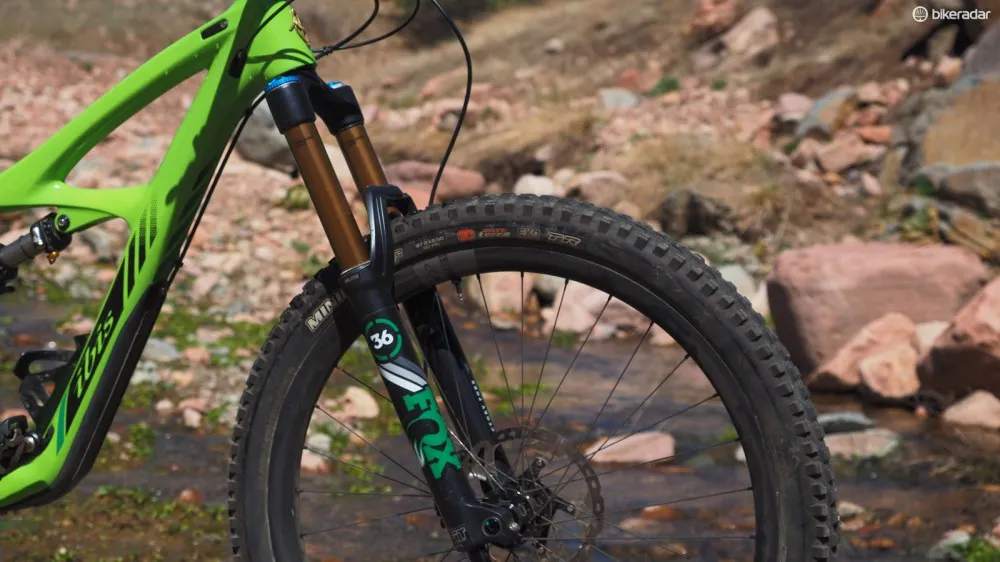
The Fox 36 fork is an absolute monster, offering up superb handling precision along with a confidently planted and composed ride
As has been noted many times before – both here at BikeRadar and at other publications – the 741 wheelset’s enormous 35mm internal rim width is a night-and-day difference as compared to more traditional rims that typically measure 7-12mm narrower. The wider foundation increases the size of the tire footprint and also allows for lower inflation pressures, which broadens the contact patch further still.
They’re also reasonably light at a claimed 1,734g per set and the problematic Ibis house-brand rear hub used on the first-generation wheels has been replaced with a much more durable DT Swiss 350 with quick-engaging 6.67-degree driver rings.
On the trail, this not only makes for a huge boost in traction but a noticeably more forgiving ride, too – and without any undue casing roll or pressure burps, either. Figure on running about 2-4psi lower than usual but take the time to experiment. Inflate them too high and that larger volume will actually make for a harsher ride than usual, and although this test set has proven plenty tough, there are still enough accounts of rims cracking on rocky terrain to make me worry a bit.
Suspension-wise, the combination of the Fox 36 Float fork and Cane Creek DBinline CS rear shock deliver a perfectly matched feel from front to back. Both spring rates are nicely matched and as an added bonus, the fork and rear shock feature nearly identical adjustment parameters so the balanced stays intact even if you prefer to stray from the stock tune (I went a touch heavier on the low-speed compression and rebound damping, for example, and also added air volume spacers for a more progression).

Ibis says the rear end will accept rubber up to 2.4in wide
The drivetrain spec offers up few surprises with perfect shifts, time after time – just as you’d hope from Shimano’s top-shelf kit. This latest round with Race Face’s narrow-wide chainrings reinforces earlier experiences with bulletproof chain retention, even when shuttling downhill runs and with no supplemental guide fitted. The solid-forged alloy Turbine crankarms are a bit heavy for a bike at this price but in fairness, they’re impressively solid and tough.
That said, it’d be nice to have more gearing range. Ibis specs a climbing-friendly 30-tooth direct-mount chainring up front but it’s offset by the comparatively narrow 11-40T XTR cassette. Although the freakishly smooth shift performance of Shimano’s Hyperglide tooth profiles would be missed, one of SRAM’s wider-range 10-42T cassettes would be a better option here – and despite what either company says otherwise, the combination works just fine.
Likewise, the Deore XT hydraulic discs once again come to the table with very good modulation and ample power, despite relatively undersized 180/160mm front and rear rotors. Reliability has been outstanding but the brakes do squeal under especially hard use (such as repeated downhill runs) – something that would likely be alleviated with bigger rotors.
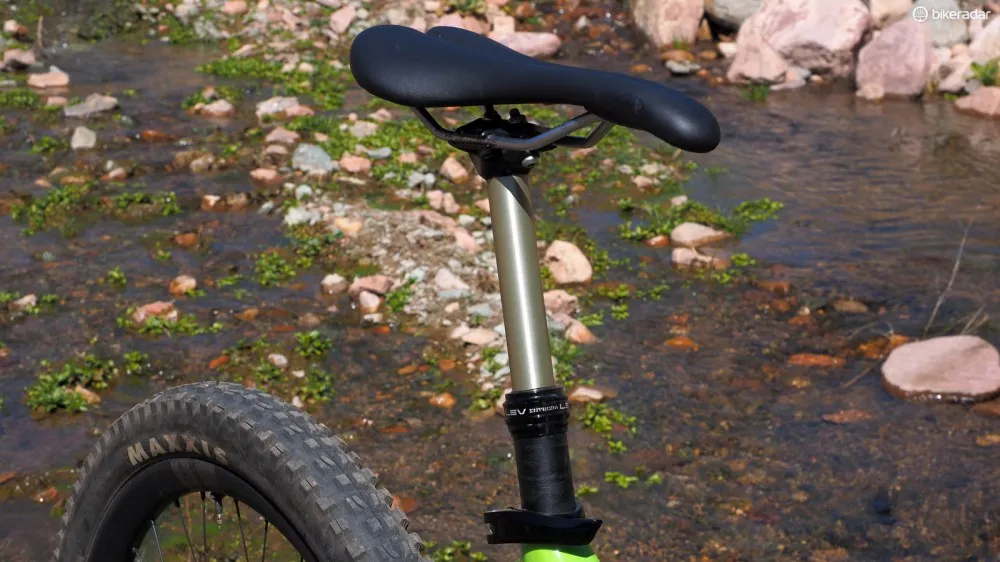
We had a few issues with the KS LEV Integra dropper seatpost
The KS LEV Integra seatpost was a touch more problematic. While it worked reliably and moved smoothly most of the time, it curiously hung up in the dropped position on occasion, requiring a quick bounce on the saddle before popping back up. Online forums are also littered with reports of failed oil cartridges, which unfortunately aren’t readily user-serviceable.
As for the rest, the Ibis house-brand carbon Hi-Fi handlebar is appropriately wide at 760mm with a good bend but the matching saddle is unusually narrow with a sharp rear edge that certainly doesn’t play well on steep, technical terrain. This particular test bike came straight out of Ibis’s demo fleet and arrived with a non-spec correct Syntace stem instead of a Thomson one so we’ll refrain from comment here.
The verdict – yes, please
The new HD3 is a legitimate home run with fantastic performance fundamentals, excellent attention to detail, and a fully checked wish list of features. When it comes to the heart of the bike, it’s just flat-out incredibly capable and an absolute hoot to ride.
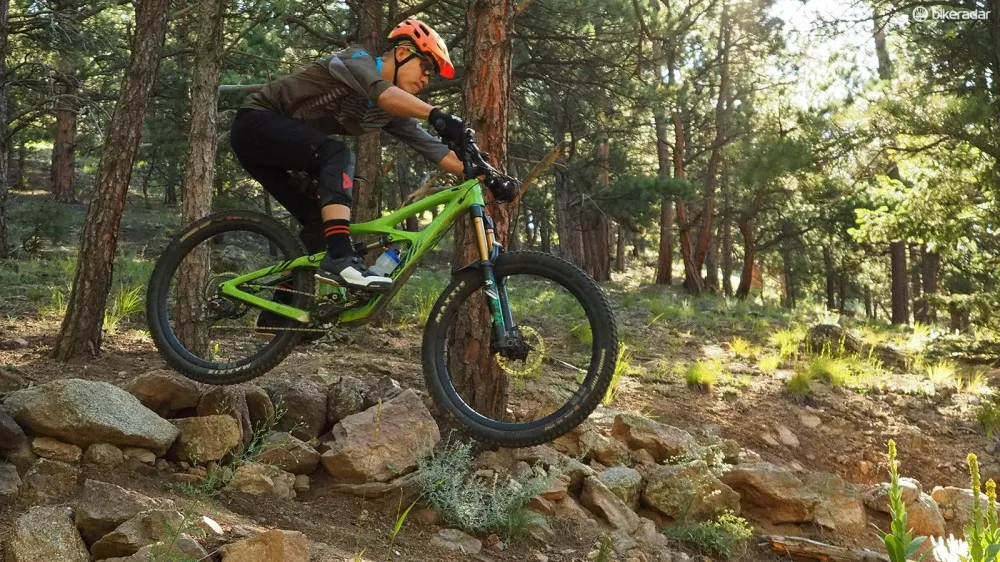
Reader, I bought it…
It is an unquestionably pricey steed, though, and its less-than-stellar value proposition is the only thing holding it back from a better final score. No matter how you slice it, it’s a touch disappointing to find Deore XT brakes, heavy aluminum cranks, and house-brand cockpit components on a bike with such a premium price tag.
The total package is so good on the trail, though, that it doesn’t take long to forget about all of that and just enjoy the goodness that it is. In typical American fashion, I really can’t afford it – but dammit, I bought it anyway.
Full bike specifications
- Frame: Ibis Mojo HD3, size M
- Rear shock: Cane Creek DBinline CS
- Fork: Fox 36 Float 160 RC2
- Headset: Cane Creek 40, 1 1/8-to-1 1/2in tapered
- Stem: Thomson X4
- Handlebar: Ibis Hi-Fi Carbon
- Grips: Lizard Skins Logo Lock-On
- Front brake: Shimano Deore XT BR-M785 w/ 180mm rotor
- Rear brake: Shimano Deore XT BR-M785 w/ 160mm rotor
- Brake levers: Shimano Deore XT BL-M785
- Front derailleur: n/a
- Rear derailleur: Shimano XTR RD-M9000
- Shift levers: Shimano XTR SL-M9000
- Cassette: Shimano XTR CS-M9000, 11-40T
- Chain: Shimano XTR CN-M9000
- Crankset: Race Face Turbine Cinch, 30T
- Bottom bracket: Race Face Cinch, BSA threaded
- Pedals: n/a
- Wheelset: Ibis 741
- Front tire: Maxxis Minion DHF, 27.5x2.3in
- Rear tire: Maxxis Minion DHF, 27.5x2.3in
- Saddle: Ibis
- Seatpost: KS LEV Integra
For more information, visit www.ibiscycles.com
